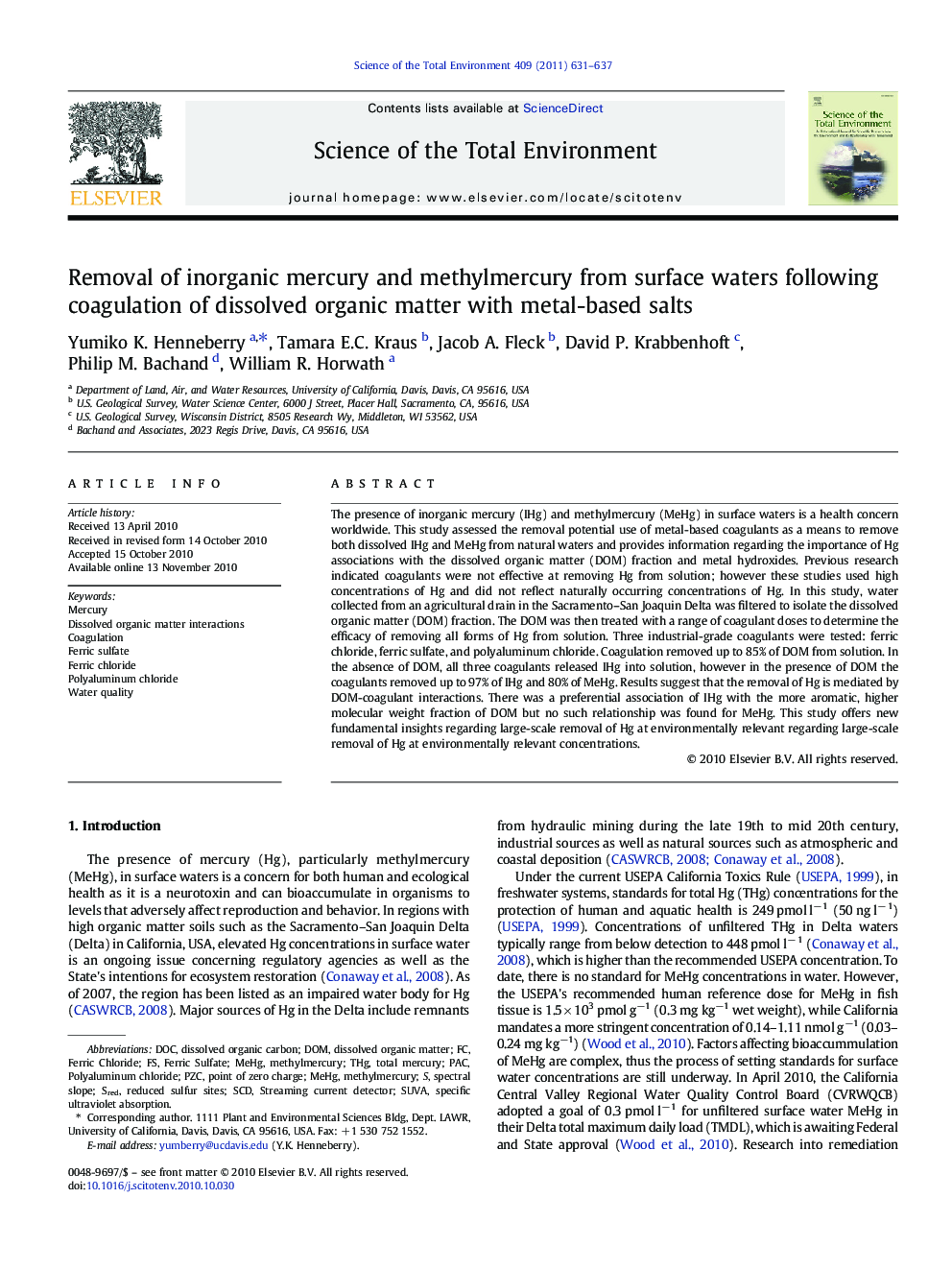| کد مقاله | کد نشریه | سال انتشار | مقاله انگلیسی | نسخه تمام متن |
|---|---|---|---|---|
| 4430098 | 1619859 | 2011 | 7 صفحه PDF | دانلود رایگان |

The presence of inorganic mercury (IHg) and methylmercury (MeHg) in surface waters is a health concern worldwide. This study assessed the removal potential use of metal-based coagulants as a means to remove both dissolved IHg and MeHg from natural waters and provides information regarding the importance of Hg associations with the dissolved organic matter (DOM) fraction and metal hydroxides. Previous research indicated coagulants were not effective at removing Hg from solution; however these studies used high concentrations of Hg and did not reflect naturally occurring concentrations of Hg. In this study, water collected from an agricultural drain in the Sacramento–San Joaquin Delta was filtered to isolate the dissolved organic matter (DOM) fraction. The DOM was then treated with a range of coagulant doses to determine the efficacy of removing all forms of Hg from solution. Three industrial-grade coagulants were tested: ferric chloride, ferric sulfate, and polyaluminum chloride. Coagulation removed up to 85% of DOM from solution. In the absence of DOM, all three coagulants released IHg into solution, however in the presence of DOM the coagulants removed up to 97% of IHg and 80% of MeHg. Results suggest that the removal of Hg is mediated by DOM-coagulant interactions. There was a preferential association of IHg with the more aromatic, higher molecular weight fraction of DOM but no such relationship was found for MeHg. This study offers new fundamental insights regarding large-scale removal of Hg at environmentally relevant regarding large-scale removal of Hg at environmentally relevant concentrations.
Research Highlights
► In the presence of DOM the coagulants removed up to 97% of IHg and 80% of MeHg.
► This suggests that the removal of Hg is mediated by DOM.
► There was preferential IHg association with aromatic, higher molecular weight DOM.
► No such relationship was found for MeHg-coagulant interactions.
Journal: Science of The Total Environment - Volume 409, Issue 3, 1 January 2011, Pages 631–637